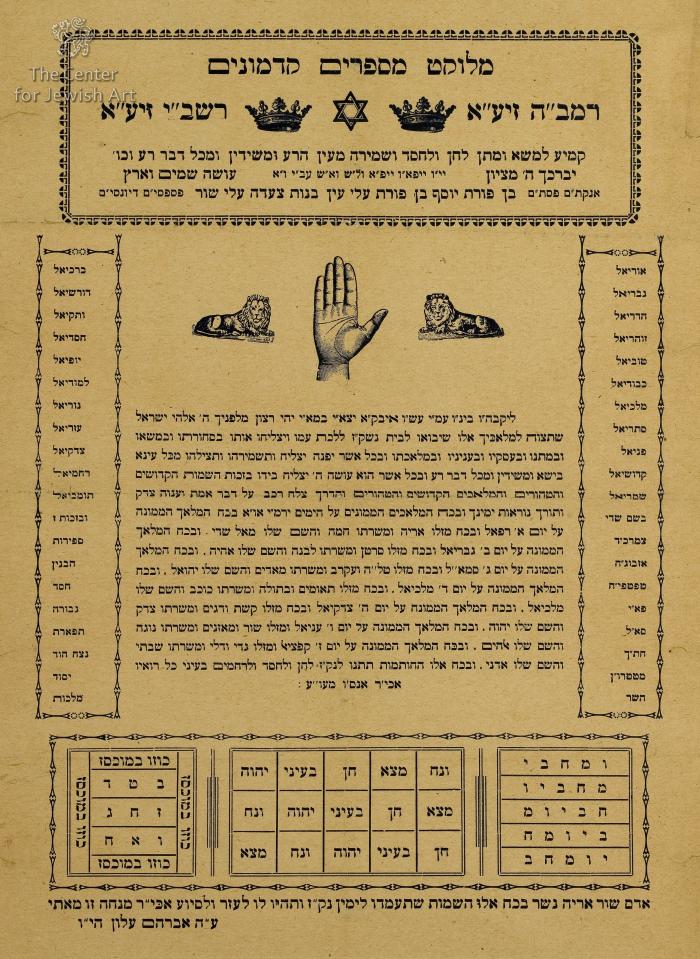
C | Crown
M | Magen David
A | Amuletic diagram | Magical square
H | Heraldic composition | Supporters | Two lions
|
The following description was prepared by William Gross:
From earliest times, man has tried to protect himself from misfortune by the use of objects that he considered holy or otherwise (e.g., magically) potent. Amulets and talismans are items generally worn around the neck or wrist, carried in a pocket or purse or hung on a wall. They are meant to protect or aid those who carried or wore them. The Hebrew word for the amulet, kame‘a, has the root meaning "to bind". Jewish amulets are usually comprised of texts (either letters or graphic symbols) that are inscribed on some sort of material; some may also contain plant matter or precious stones. The texts of amulets usually include holy names that are believed to have the ability to affect reality, along with incantations summoning angels or other magical powers. For the most part, an amulet has a specific purpose: to ease childbirth, facilitate recovery from illness, improve one’s livelihood, and so on, but in the modern world many are also made for general protection.
There exist in the Gross family collection more amulets printed on paper from Morocco than from any other country. These were printed in several cities by various publishers, virtually all of them from the 20th century which was the time for the beginning of Hebrew printing in Morocco with few exceptions. Many of these contained elements in common, mostly featuring the hamsa and were often printed on colored paper.
The hamsa in the center is illustrated as a realistic hand. This amulet is another printed version of 075.011.075, bearing the same texts and one additional illustration, that of two crowns. At the top of this amulet, it is stated that the text is taken from ancient books. This amulet protects "me-'ayin hara", against the evil eye and spirits as well as to bring success in negotiations. The talisman carries illustrations of lions, the Magen David, and the hamsa. The grid in the lower left-hand corner has letters arranged so that the numerical equivalent in every direction of a line is 15, the grid in the middle contains permutations of a biblical phrase about Noah, and the grid to the right contains permutations of three letters in the corners with the Tetragrammaton in the middle. In the two columns at the sides are listed the names of many angels, abbreviations of biblical passages, and, in an unusual appearance, the Sephirot. In the center is a long text that essentially identifies the angels responsible for protection on each day of the week.
This amulet was published by Avraham Alloun. Avraham Alloun was a Rabbi, paitan, and author of holy poetry and Ksidot (stories). Alloun made his living by publishing amulets, Kasidot, calendars, and other single pages. It is told that he would take the publications from the printer on his bicycle and sell them on street corners in the Jewish area of Casablanca. There are 39 items published by Alloun in the Gross Family Collection. He made Aliyah to Israel and died there in Jerusalem. According to the decorations, this was printed by Yehudah Razon in Casablanca



